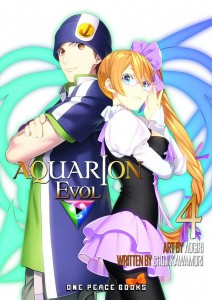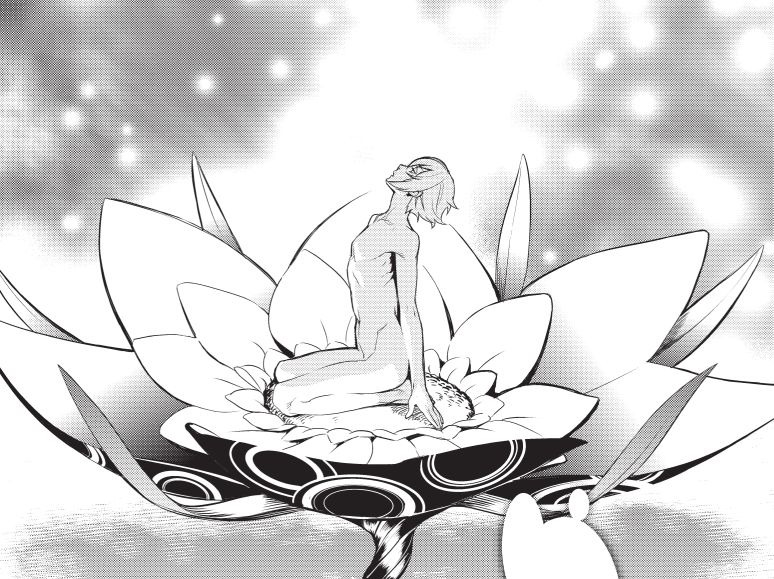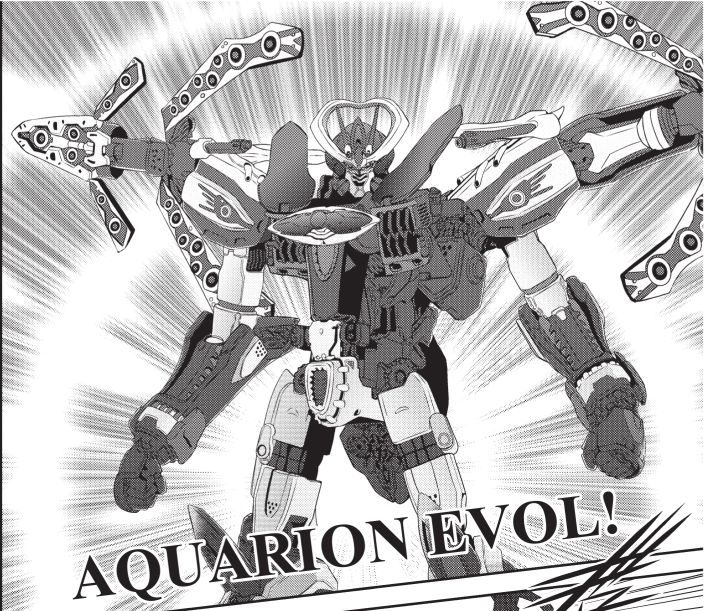Examining Aquarion Evol volume 4
Creator Shouji Kawamori’s Aquarion franchise has always tread a thin line between robot anime and romantic fantasy. One Peace Books’ release of the fourth collected volume of the Aquarion Evol manga temporarily tips the balance heavily in favor of romantic and relationship drama. The book maintains the franchise’s penchant for opaque abstraction, yet at the same time the fourth volume is the most intense, personal, and emotional of the series so far.
The Aquarion Evol story is about the alternate dimension alien Altairians attempting to secure human women supernaturally hardy enough to survive the dimensional transfer from earth to Altair in order to repopulate the dying civilization. So from the outset the story has been about connections and the inability to connect and communicate between people. The fourth book narrows that focus onto each one of the story’s primary cast members, alternately bringing them together while tearing them apart from each other and from their own beliefs. The romantic triangle between Amata, Mikono, and Zessica begins to come to a tragic head. Yunoha is forced to come to terms with the greatest loss of her life. Commander Fudo encounters a reunion that forces him to depart on a solitary quest. Cayenne is forced to recognize that the distance between he and his sister has been greater than he realized. Conflicting difference in perspective even arises among the highest command of the Altairian forces. Robot action in volume 4 is minimal and marginalized, relegated to only a two-page training sequence and a brief non-committal battle. The bulk of the book focuses on weighty emotional angst, deliberate philosophical decisions, and the major plot developments that occur as a result of character’s emotional and philosophical decisions.
The Aquarion franchise has always been a strange hybrid of slapstick, absurdity, and drama. The fourth volume is the Evol series’ most dour, intense, and dramatic installment so far, but it occasionally takes its depiction to absurd extremes. A degree of the ridiculous frequently seems to undercut the book’s most intense efforts to be serious and dramatic. However, readers that have stuck with the series through the first three books, by now, will take the fourth volumes’ mood swings in stride.
Aogiri’s graphic art is once again crisp and clean. Panel layout is again occasionally confusing or too tightly zoomed to fully illustrate the frame. But this book also includes a handful of sequences that are rendered unusually well for the series, really dynamically expressing continuity and motion well in two-dimensional frames. Print quality is crisp, although the book’s first four pages do appear to be the typical color serialization reprinted in monochrome for the collected edition. The translation is, once again, entirely serviceable, although not entirely free of small typos. Japanese sound effects are retained and unobtrusively translated. The book contains no nudity or sex, and minimal graphic violence. The only instance of adult language is the inclusion of “bitch,” used in its literal meaning of “female breeding stock.”
The fourth collected volume of Aquarion Evol is a turning point for the story. The very character-centric volume is dense with emotional turmoil, and dramatic shifts in character relationships mark notable evolutions in the plot development. Readers strictly fascinated by the Aquarion franchise’s unique mecha action will be left wanting throughout this book, but typical readers that are engaged with the story and characters will likely find great satisfaction in this book’s decision to finally head-on tackle many of the character-centric sub-plots that have been juggling through the prior three books.








